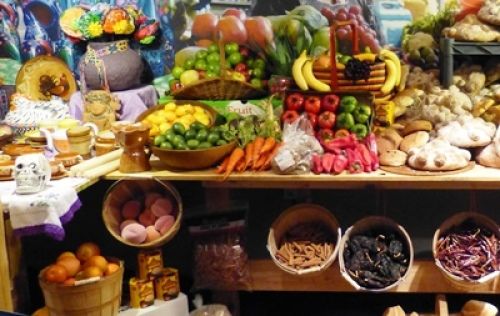
A simple family holiday to honor the dead has evolved into a vibrant celebration of art and culture at schools, libraries and museums. Special events held around the country help introduce Day of the Dead to more people every year.
Dia de los Muertos has its roots in pre-Hispanic, Aztec and Christian beliefs. Believers accept that the souls of the departed return to reunite with their families at this of the year.
Although the holiday is now associated with Halloween, it traditionally begins on November 1 when children are thought to return, followed by the return of adults on November 2. In Mexico the celebration takes place at home, as well as in the cemetery where food, drink and other gifts are brought to the loved ones’ graves.
The markets are especially festive this time of year with vendors selling specialty items for decorating family altars (called ofrendas). The altars, whether simple or elaborate, honor the deceased and are made to be brightly colorful and even whimsical. Marigold flowers and petals decorate the altars, archways and graveyards.
Vegetables and fruits play an important role in the celebration because they’re used to decorate the altars with the deceased’s favorite foods and drinks. Chili peppers, onions, tomatoes, tomatillos, jicama, apples and oranges are some of the most popular ingredients.
Families also prepare special recipes such as mole, tamales, Mexican chocolate, atole (a masa-based hot beverage) and a Day of the Dead bread called pan de muerto. This traditional semi-sweet yeast bread is flavored with anise and orange peel. The bread can be shaped like a skull or as a round loaf with bread bones crossed on top, then brushed with a sugary glaze.
Because the holiday teaches that death isn’t something to fear, the folk art created for the celebration often depicts skeletons in humorous, everyday situations. Molded and decorated sugar skulls, representing the loved one’s soul, are a traditional sweet addition to the altars.



















Comments
Log in or create an account to post a comment.
Sign up Log in